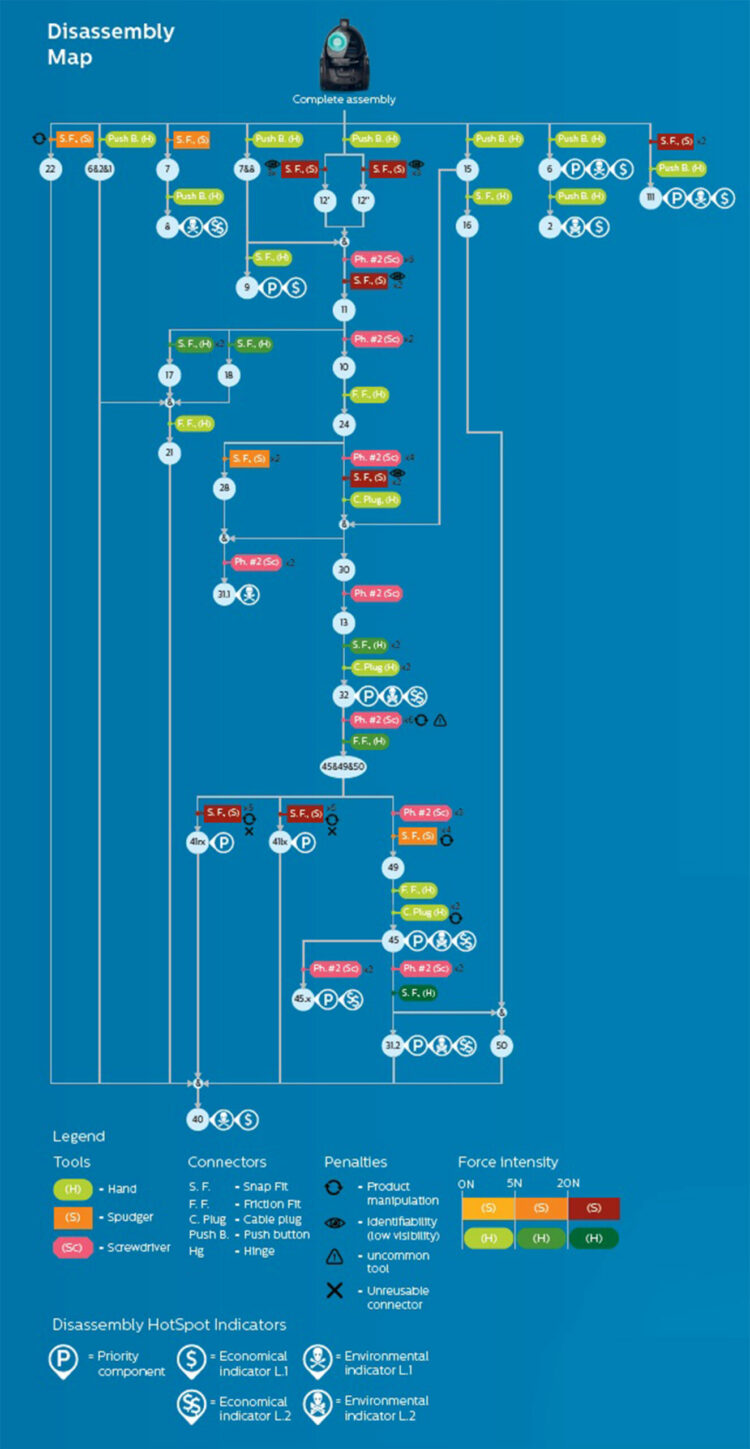Enhancing consumer product reparability
Feb 2019 - ongoing
By: Francesco De Fazio

Product design for Circular Economy
The European Commission pointed out in 2015, with “An EU action plan for the Circular Economy”, the importance of energy and resource preservation, by respecting Earth’s resilience and renewability (European Commission, 2015). A transition towards Circular Economy is necessary in this sense to create new sustainable advantages, protecting businesses from future potential resource scarcity and boosting the economy. In order to enable this transition, the way products are designed must change by taking into account product life extension, reuse, refurbishing and recycling.
Research objective
In recent years, Philips has expressed a growing interest in circular economy. This pushed the company to investigate the current state of their product portfolio and new ways of designing consumer goods. In this sense, product reparability and disassembly represent some of the most important design requirements in order to enable circular business models. Carried out in collaboration with the company, this research project practically investigates design features which influence positively and negatively product repairability, eventually proposing new design guidelines and methodologies for design for repairability and product retirement.
Assessment of seven products repairability and practical recommendations
The European Commission Joint Research Centre released in 2019 a Scoring Assessment System for Repair and Upgrade of Products (Cordella et al., 2019). This system has been applied on seven consumer products, part of the vacuum cleaners product group, assessing more than 260 disassembly operations. Firstly, insights gathered during this analysis have resulted in a list of practical design recommendation for the manufacturer and remarks on the assessment system itself.
A new design tool: the Disassembly Map
Additionally, a new design tool for product architecture mapping, called Disassembly Map, was created. This is an effective method to represent the architecture of a product, showing disassembly depth of all the product components and the intricate logic connections which link them to each other. The most important components for product repairability and retirement are spotted using special indicators, guiding the attention of designers towards these products’ “hot-spot”.

Testing of four redesign approaches
The Disassembly Map, together with the insights collected from the repairability assessment, were tested by redesigning a representative consumer product, together with the Philips I&D department. During this process, the following design methodologies have been explored:
- Redesign for disassembly time optimization through clumping methodology
- Redesign for hotspot components accessibility through bottom-up assembly
- Redesign for legislation compliance and use of common tools
- Redesign for sequential independent disassembly and safer self-repairs
New official serviceability design requirements for Philips I&D
The results achieved convinced the manufacturer to define together new serviceability design requirements, which will be implemented in the development of future Philips canister vacuum cleaners. This research concludes suggesting new assessment values for a discrete rating system of canister vacuum cleaners, which could be used by the European Commission Joint Research Centre for possible future iterations of the Scoring System for Repair and Upgrade of Products.

Supervisory Team
Prof. dr. ir. Bakker, C.A.
Dr. Ir. Flipsen, S.F.J.